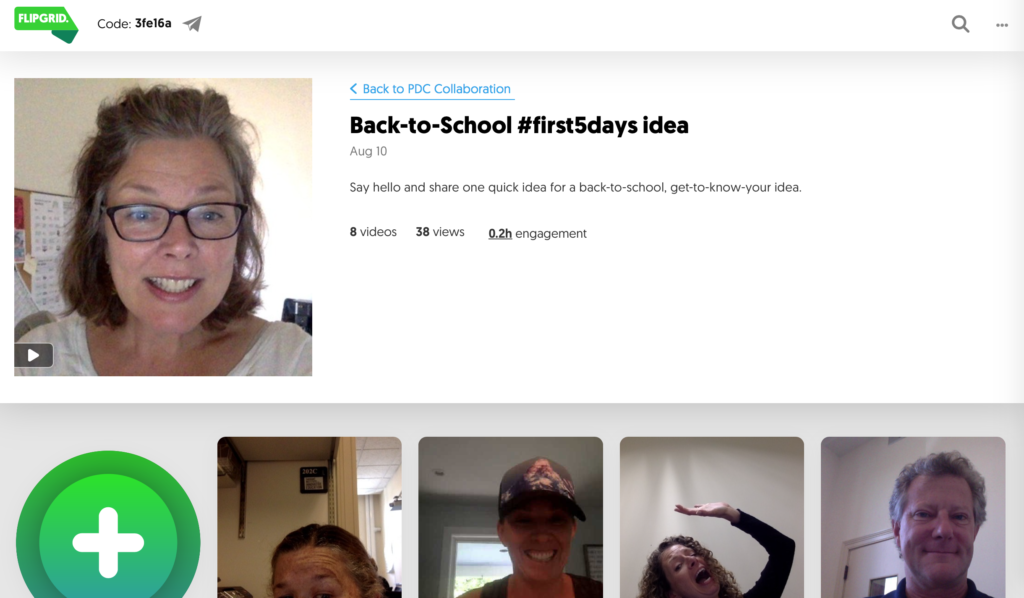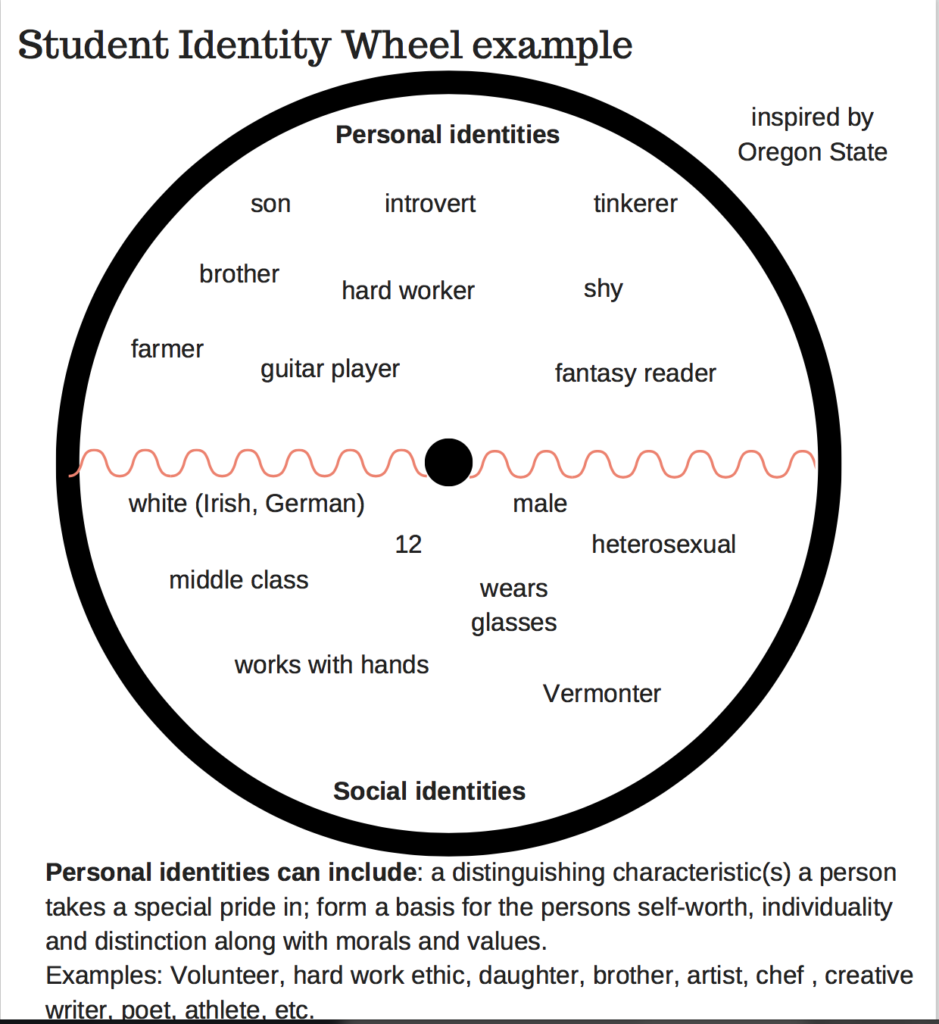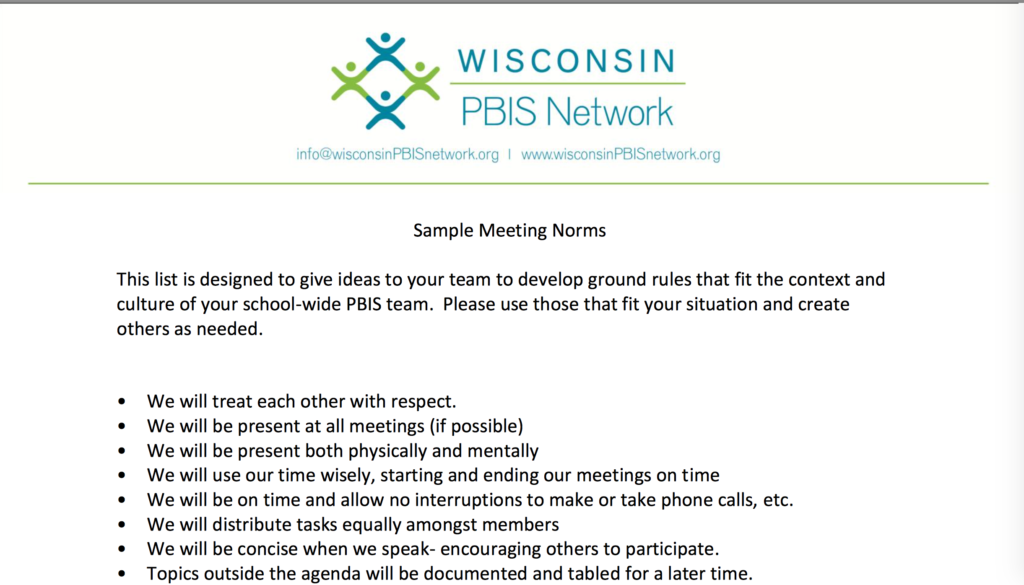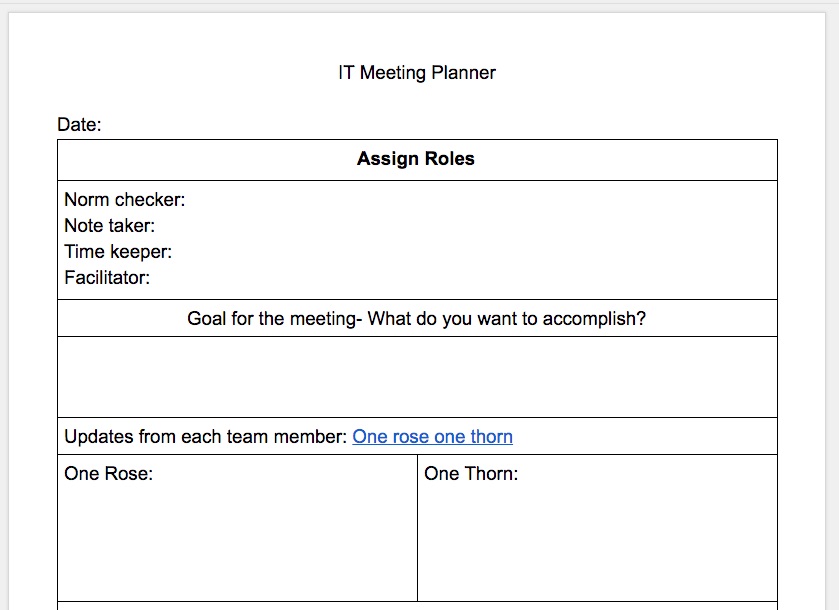Or, What to Bring to the First Staff Potluck
 Opening up to fellow educators can be hard. We all know we’re doing the best we can, but many of us also feel like we could be doing better for our students. We want to do the best we can and sometimes we get terrified that it’s not enough. What if none of the other teachers feel this way?
Opening up to fellow educators can be hard. We all know we’re doing the best we can, but many of us also feel like we could be doing better for our students. We want to do the best we can and sometimes we get terrified that it’s not enough. What if none of the other teachers feel this way?
Except: they do.
And that’s why it’s important to be brave enough to connect with the other teachers on your team, to really get to know them as people — and to let them get to know you in return. They can be some of your most important resources during the school year.
Why put the work in?
I know from my own teaching experience that an effective team made all the difference for me as a teacher. Being part of an effective teaching team:
- improved my practice
- challenged my thinking
- supported teacher voice in leadership and decision-making
- and helped solve problems on a regular basis.
But how do you create an effective teaching team from a group of disparate individuals, all with their own needs and preferences? Now is the perfect time to start that work.
Icebreakers are not ridiculous.
We always need new team-building activities for teachers and students, so why not use the time to bone up on new tech tools as well? These can be fun, engaging and personalized, and you will be totally surprised by who on your team has the best Pinterest boards.
Try an “Innovation Salon”
At the beginning of every staff meeting here at the Tarrant Institute, someone shares a neat, useful, and engaging tech tool for us all to explore. This takes only about 5 minutes, and we each add a new tool to our arsenal. We’re also given the time to explore for a few minutes which honors our curiosity and gives us a place to explore. Up above is a recent one we did on Flipgrid, an excellent way for teachers to use technology to engage and connect across time, space and interwebs.
Share a meaningful image from your summer
Have teachers create a Thinglink. Ask teachers to share a fun selfie from the summer and add links that describe them, such as:
- a favorite book you read this summer
- one hope for this school year
- something that inspires you
- one mistake you made this summer
I loved hearing about what other teachers read over the summer, and about goals and hopes as well during opening staff meetings and in new teams. It sets the stage for growth and aspirations. Here’s one I did to introduce myself to a group of teachers.
Share your creations with each other on social media and create the makings of a strong and trustworthy PLN:
Personality traits reading project at @RhodesSD845 with the kids! I got mine done!! #rhodespride pic.twitter.com/UjbHoefbDR
— Abigail (@AbigailRob) August 18, 2017
Activities like this one, combining identity exploration with art, can be meaningful to students and teachers.
Examine your identities as a team.
We’re learning it is critical for teachers and students to examine and explore their identities, so we can reach and teach each other from a perspective of strength, instead of perceived deficits. There are many great tools for this that can be used with both teachers and students.
Here’s a sample identity wheel created with this handy graphic design tool, Canva:
This could also be used with students as part of the identity section of their PLP. Lessons about multiple and flexible identities are also a great way to begin the school year honoring different life experiences and backgrounds.
Watch this video and ask yourself:
When was the first time you tried something new? How did it make you feel?
We’re using this video as a springboard for discussion among the teachers at The Ottauquechee School. They’re starting new interdisciplinary teaching teams this year. These teachers are diving into something new– and both activities take a lot of courage.
Snacks.
Once you find out the language arts teacher down the hall always carries caramel and cheese popcorn in his backpack, while the chemistry teacher has a stash of jalapeño Fritos in a desk drawer, you have the makings of a team able to weather any teaching crisis.
Now you’re all acquainted, you can start deciding on some collaborative practices.
What about co-teaching?
Just let these ladies start off the co-teaching or teaming vibe for you this year. You don’t even need an apple sweater.
Many schools are expanding teacher teams to create interdisciplinary teams that include special educators and allied arts teachers, and these teaching teams often do some sort of team, or co-teaching. Co-teaching as a model has taken root in many schools and there’s lots to learn from these experiences.
It might be helpful for teams to review the Teaming Phases from Tuckman to know that teaming can be challenging and that this is perfectly normal.
Then as a challenge, watch this clip from Remember the Titans and discuss: what phases are the players working through?
Set out some norms.
Finding out what’s acceptable and where your team-mates boundaries are is invaluable.
A team has to have some common expectations that respect every member. Everyone has to feel valued and that this team is important. We create class rules and norms together with students, so doesn’t it make sense to create norms with our new instructional teams?
Here’s a good process for developing norms, and here’s an example of norms with a positive tone.
Use technology to make teaming easier
Decide the best way for your team to share links and resources online. Is it a closed Facebook group? Twitter? A private Pinterest board? Google Classroom or Google+ ? Or good old (but sometimes hard to keep up with) email? Make finding and sharing resources easy so everyone can participate.
At Cabot School, the team uses Slack.com to share resources, messages, meeting times and agendas, and collaboration with individuals, teams, and the whole faculty.
Google Docs and Calendars
Here’s a meeting template the Ottauquechee School principal just created for the new teams at her school:
Everyone sees the same notes, has a role, and can participate in the work, even if they’re not in the meeting. Get a copy to use with your team by adding making a copy and adding it to your Drive.
Online feedback
Teacher teams can easily collaborate on scales, assignments, and projects using Google Docs. This is a great tool for teachers to use to get feedback from teachers (and students!) about curricular materials. One Vermont teacher sends out his syllabus to all students before class, and puts the sharing settings on “suggesting”. This gives student a chance to give feedback on the course before it even begins, and shows students that the teacher is interested in shared responsibility, student voice, and collaboration in the classroom.

Why are we doing this, again?
Because your team-mates are just people.
Fierce, amazing, talented, breakable and passionate people. Just like you.
Take the time now to get to know them. Find out what the best book was they read this summer, look at photos of their pets and kids, learn who likes dark chocolate-covered almonds and who has a nut allergy (Ed’s note: please do this last one first.) Listen to what they like about Slack, and who wants to launch Google Drive straight into the dark heart of the sun.
Then once school gets underway, you’ll be part of a supportive, effective pack of educators who care about one another, lift each other’s teaching practices and always, always share their snacks.
SaveSave






2 Replies to “Laying the groundwork for effective teaching teams”
Comments are closed.